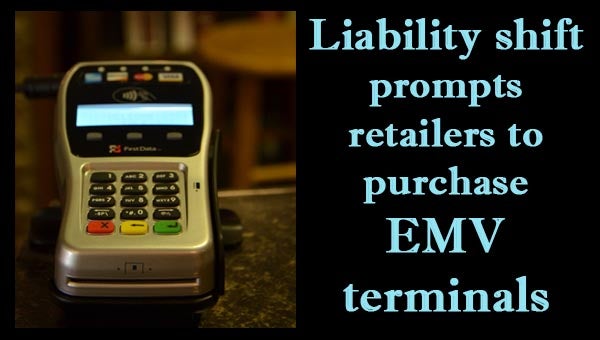Chip-card technology arrives in local stores
Published 9:01 am Thursday, October 8, 2015

In European countries, the use of chip-embedded credit and debit cards is no news, but in the United States, their use is on the rise, particularly in response to a recent policy change.
That change can affect local merchants as well as those all across the country because, as of Oct. 1, merchants who have not begun using Europay, MasterCard and Visa (EMV) chip-card terminals are now liable in cases of counterfeit fraud for not taking proper precautions against it.
This used to be the bank’s responsibility, but not anymore. Merchants now have the capability and responsibility to protect themselves and their clients, so the liability has shifted to them.
While there are no penalties or fines for retailers who abstain, if a fraudulent transaction or data breach passes through a merchant’s terminal, the merchant will be responsible for making the customer whole as well as the incurred legal expenses and the potential subsequent loss of consumer trust and clientele.
“People are going to start expecting merchants to have them and are going to wonder why if they don’t have them,” said Nicole Huff, Elavon account representative and Regions Bank Tri-Cities field representative.
Retailers who choose not to upgrade could face much greater costs than the price of the upgraded terminals, which range in price, but average around $500 apiece, she said.
Retailers are also faced with deciphering between facts and misinformation. Huff said some businesses are getting up to 20 calls per day from service providers pressuring them to upgrade, and some that are even threatening with fines and penalties.
She gets multiple calls everyday from companies pushing them to upgrade. One claimed to be “a direct provider for Visa and MasterCard,” which Huff said can be misleading to retailers. The same caller even told her there could be fines and penalties if they did not upgrade.
“My best advice would be that the person that needs to become EMV-compliant or needs to upgrade should speak with their bank or with a large bank in the area, so they can find more knowledgeable assistance,” said Huff.
Some are resistant to become EMV-capable because of the cost of upgrading machines, not seeing the need to switch or simply not understand the liability shift.
In some cases, merchants are reluctant to make the change and question the need for the new technology.
Sherry McCoury, owner of Dynasty Rent-a-Gown and Tux, would neither confirm nor deny her business has the new terminals, but said she thinks this is just a step toward “a cashless society, a one-world government and one-world currency.”
Will Hedrick, general manager of The Coffee Company, pointed out that some businesses have only recently switched from dial-up to ethernet with their terminals, so for small businesses, making the switch could be an additional expense following a recent upgrade. One of their machines from 2006 has the chipped card reader and is a dial-up terminal. This shows that the technology is not new, but that the liability shift has prompted many retailers to upgrade.
EMV cards look basically the same as the credit cards everyone is famliiar with, but on the front left side is a symbol indicating the location of the chip. Currently, users insert the card and then sign the receipt. In Europe, the chip-n-pin system is in place in which users enter a pin number instead of signing, which may be in the future for the U.S. as well.
The benefit of the chip is that during a transaction, only a one-time authentication code is processed, so there is significantly less opportunity for identity theft or card replication. With traditional magentic strips, thieves can get access to a variety of fixed personal data and easily replicate it.
“I don’t like the liability shift, but if it will increase credit card security and will protect our clients, then it is something we need to do,” said Darrell Cannon, owner of Cannon’s Fine Home Furnishings.
They ordered the new terminals three weeks ago and received them three days later. Cannon was impressed with the delivery time, and his only complaint was the time it takes to scan. The cards must be inserted for 8-12 seconds, which compared with the speed of swiping, can seem like an eternity.
According to a report published in 2015 by Barclays, a British multinational bank, the United States is responsible for 47 percent of the world’s card fraud, though it only accounts for 24 percent of the world’s card volume. Experts place the blame on the States’ slow adoption of chipped cards.
The same report documented a 70 percent decrease in counterfeit fraud in the United Kingdom between 2005 and 2013, resulting from the use of chipped cards.
The evidence strongly favors the use of chip-cards, but even more of a merchant motivator is the liability shift.
Huff said that despite misconceptions, the reality is that EMVs protect businesses and consumers.
One issue that could arise for those that choose not to upgrade is that hackers may be keen to the new system and may target retailers that haven’t upgraded.
“If they do not have the right equipment to protect themselves, they’ll take the hit as business owners,” she said.
If the customer does not have the chipped card, but the retailer does have the proper EMV terminal, the retailer will not be held responsible for fraudulent activities.
The change will not affect online and phone purchases, and is affecting restaurants slightly differently. The point of the shift is to ensure the confidentiality of people’s private information, so in restaurants, if cards are being taken to the back to be swiped or even inserted with the chip, there is still a time when the card is vulnerable.
Huff said there is a push in the restaurant industry to use the wireless EMV readers or to have people checkout as they leave, so their cards never leave their hands.
John Williams, co-owner of Dino’s Restaurant, said he just received his EMV terminals Wednesday.
“I think its a good thing,” he said. “Anything that’s good for the safety of our customers is something we support.”
He said it has not been an additional cost for them and that they, like many, are leasing the terminals. He said even if they bought them, it wound not be an issue because the added security will result in cheaper rates.
They are not using the new terminals yet at Dino’s, but Williams said they are ready to do so whenever the details between the terminal and the point-of-sale system are resolved.
“Our customers pay at the front anyway, so it really isn’t a big deal for us,” Williams said. “We’re a small place.”




